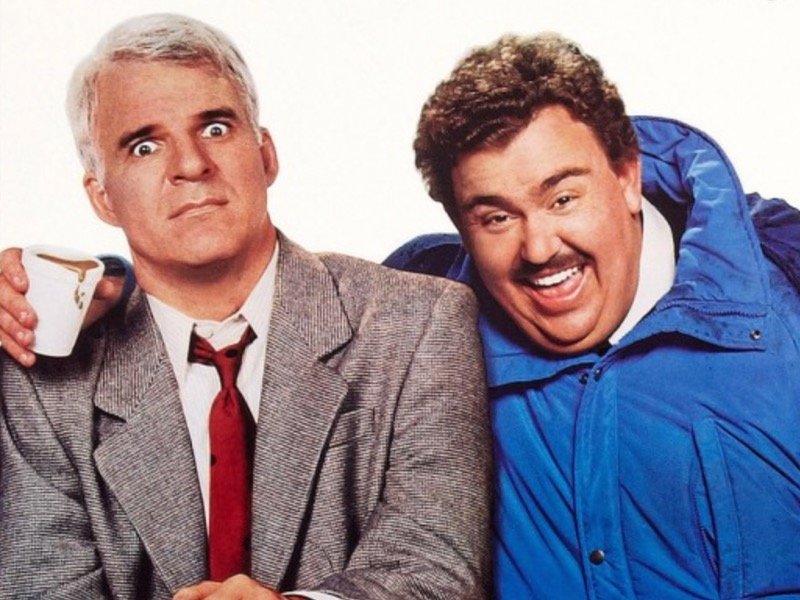There's one thing you'll quickly learn about Dale Kuntz when you meet him: He lives and breathes cinema. After all, he is a Milwaukee film historian, a living and breathing film history text book that's full of deep, rich knowledge of cinema history, celebrities, genres and stories to tell.
I met him on the night of Feb. 11 at the Charles Allis Art Museum where, twice a month, he lugs in his projector along with a 16mm film from his large collection to show to those wanting to see a film that predates the loud, CGI-driven films of today. In fact, the films he shows – all of which from the 1930s and 40s – are rare treasures of Hollywood's Golden Age.
On this particular night, he was showing the 1939 classic "Wuthering Heights" starring Merle Oberon and Laurence Olivier as part of his film series running through March, centered on films that were nominated for Best Picture at the Oscars but didn't win.
As people sat in aligned rows in the museum, waiting for the film to begin, Kuntz made his way to the front and spilled out his knowledge of film history, fascinating his audience with trivia and details about the film that's about to be seen that could even make a film scholar stop and think, "I didn't know that."
His commentary and knowledge on the film doesn't stop when the lights inside of the museum's ballroom go dark. During the screening, he shouted to the audience what to look out for in a particular shot from the back of the room where he sat near the projector. It was much-welcomed live-commentary.
His lifelong admiration for film began at the age of 6, when he and his movie buff family went to the old Sherman Theater and saw the 1938 musical "Sweethearts" starring Jeanette MacDonald, Nelson Addy and Frank Morgan.
"It was on a Sunday afternoon so I went and fell in love with it," Kuntz said. "As a kid, all I remember was Jeanette MacDonald sitting on the floor in this beautiful costume and Frank Morgan throwing a drink out the window. Of course since then, I’ve seen it so many times. She became my favorite. I always tell people that there is no truth to the rumor that I was born in the theater during that Jeanette MacDonald movie."
He was born and raised in Milwaukee, growing up as a kid who was a bit different from his peers only because they often read comic books while he often read movie magazines he had bought from the drugstore around the corner from his house.
Growing up, his allowance from his parents was 25 cents a week. He said 10 cents was for Sunday school and church, 10 cents was for a movie and the remaining nickel was for popcorn.
"If we didn’t go to the movie, I didn’t get the 15 cents," Kuntz admitted. "We would go to the movies faithfully every Sunday. For some reason, my mother had a very strict rule: You cannot go to the movies during the week until you were 14. Don’t ask me why it had to be 14. Once I reached 14, then I went to the movies often because during that time, the theaters would change the movies three times a week."
Luckily for Kuntz and his family, the front door of their Libson Ave. house was right aligned with the box office of the Parkway Theater across the street. This was an ideal location, especially for a young, emerging movie buff such as himself.
The Sherman and Parkway Theaters weren't the only ones in Milwaukee he visited. After moving to Lisbon Avenue where he went to the Parkway Theater, he was within walking distance from other, now historic, theaters.
"Four blocks north from Parkway Theater was The Comet Theater and The Tivoli Theater and six blocks south was the Lyric Theater and about eight blocks east was The Rainbow Theater," Kuntz said. "I had all these theaters to go to."
He graduated from Milwaukee's Washington High School, where he was in the same graduating class as legendary actor Gene Wilder. According to Kuntz, they never got along very well because he had won the lead role in the school play over Wilder.
Since graduating high school and going onto UW-Milwaukee, he's had a slew of professional experiences as a purchasing director at WISN-TV, a copywriter at the old Gimbel's department store and the film curator at the Milwaukee Art Museum.
Kuntz said he's a very fortunate person with the gig at the Milwaukee Art Museum because it marked the beginning of when his vocation and avocation merged into what he's been doing over the last 50 years: showing off his collection and teaching everything he knows about cinema history.
"A couple places I’ve done programs before for called and wondered if I wanted to do it," Kuntz said. "I’ve been doing programs on my own for various retirement homes, some churches, women’s groups and so forth."
In 1995, Kuntz said that everyone knew about his vast film collection so they wanted him to hold an exhibition at the Charles Allis Art Museum.
"While I was there, Sue, who was the director at the time, said, 'Dale, why don’t we do a movie one night a week in connection with the exhibition?' That’s how I started doing films at the Charles Allis," Kuntz said. "It was so popular that after the exhibition left I just stayed. So now we do it twice a month on a Wednesday night."
Besides showing his films at different locations throughout the Milwaukee area, he often shows films to members of his own film society referred to as FOOFs or Followers of Old Films, which was started nearly 50 years ago in 1966. He often shows films inside of the small theater he had created in his home's basement, which he calls "Tiny Tara" in reference to his all-time favorite film "Gone With The Wind."
As you step inside his home, an original movie poster for the film hangs on the wall. As you continue to walk through the house, among the Disney and Mickey Mouse collectibles are "Gone With The Wind" stills and artwork. Downstairs in "Tiny Tara," stills of Jeannette MacDonald and Tyrone Power, his favorite actor, hang on the wall along with more "Gone With The Wind" posters, stills and even a Clark Gable standee. On the far wall, which the projector screen hangs down during screenings, is his film collection, stacked in reels on top of one another on lower shelves. On top of the shelves are autographed portraits of movie stars he's met over the years.
Of course, a theater wouldn't possibly be complete without vintage theater seating, which are aligned throughout the space.
It became clear that his love for movies, dating back to when he first laid eyes on Jeannette MacDonald in "Sweethearts" and the first time he was transfixed by "Gone With The Wind," is apparent in not only his knowledge and enthusiasm about cinema, but also what he has accumulated over the years.
"When 'Gone With The Wind' first came out, I was too young," Kuntz said. "I didn’t see it until 1948 with the re-issue, and I had read so much about it and I wanted to go see it at the Warner Theater and I sat through it and the intermission came. I must’ve really looked puzzled because the woman next to me said, 'What did you think of it?' I said, 'I really liked it, but I thought there was more to it' and she said, 'Well, that was just the intermission!' I’ve never been to a movie that had an intermission. I was ready to get up and walk out."
Since then, he has seen the film a staggering 128 times in theaters, on television and during screenings he's hosted. To no surprise, a 16mm print of the film is included in his collection.
"People often ask why it means so much to me, and I really can’t explain it," Kuntz said. "It’s a good story. I love the cinematography, and sometimes I think about it that Vivien Leigh grew up after a war and adjusted to it, and I was the same way. I became a teenager after World War II, and my world as I knew it changed completely. I know that’s a wide similarity, but that’s all I can think of. It’s just a perfect film."
Out of the countless films, stills, posters and memorabilia he owns – most of which were collected from the manager staff at the Parkway Theater, film catalogues, various events and an old place in Downtown Milwaukee where the studios would send posters and lobby cards – his most prized in his collection is the original motion picture paperback edition of "Gone With The Wind" from 1939. Inside of it are color photographs, one in particular of Vivien Leigh that's signed by the actress when he met her in the early 1960s at Chicago's Blackstone Theater.
"I wrote her and said I’d like to come backstage to meet her," Kuntz said. "I got a nice letter back, typed, probably written by her secretary or someone, and said that I should come back stage with this letter. We went backstage, and they said, 'Sorry, Ms. Leigh isn’t seeing anybody. Goodnight.' I showed them the letter, and they said, 'Oh, come right this way.' They were probably thinking, 'Who the hell is he?' I’m so glad that I showed that letter."
To this day, Kuntz continues to show movies on a monthly basis for Milwaukee Catholic Home and Bay View Community Center. Every so often, he also shows films and works on programs for different church groups and women's groups.
His mainstay, however, is still the Charles Allis Museum. Once the current film series ends, the Museum is going to have a retrospective exhibition on burlesques. As part of the exhibition, his next series is going to be centered on showgirl movies.
"I keep saying that burlesque is nothing more than vaudeville, just raunchier and more racy," Kuntz said with a smile.
The series is going to consist of 1939's "Rose of Washington Square" with Alice Faye and Tyrone Power; 1934's "Dames" with Dick Powell and Ruby Keeler; 1945's "The Dolly Sisters" with Betty Grable and June Haver; and 1941's "Ziegfeld Girl" with Judy Garland, Lana Turner, James Stewart and Hedy Lamar.
"A lot of people come back and tell me that they like my comments about the movies more than the movies sometimes," Kuntz said. "Several people are regulars, and they've said they don't look at what the movie is. They just say, 'If you're doing it, then we know it's going to be a good movie.'"
Colton Dunham's passion for movies began back as far as he can remember. Before he reached double digits in age, he stayed up on Saturday nights and watched numerous classic horror movies with his grandfather. Eventually, he branched out to other genres and the passion grew to what it is today.
Only this time, he's writing about his response to each movie he sees, whether it's a review for a website, or a short, 140-character review on Twitter. When he's not inside of a movie theater, at home binge watching a television show, or bragging that he's a published author, he's pursuing to keep movies a huge part of his life, whether it's as a journalist/critic or, ahem, a screenwriter.







